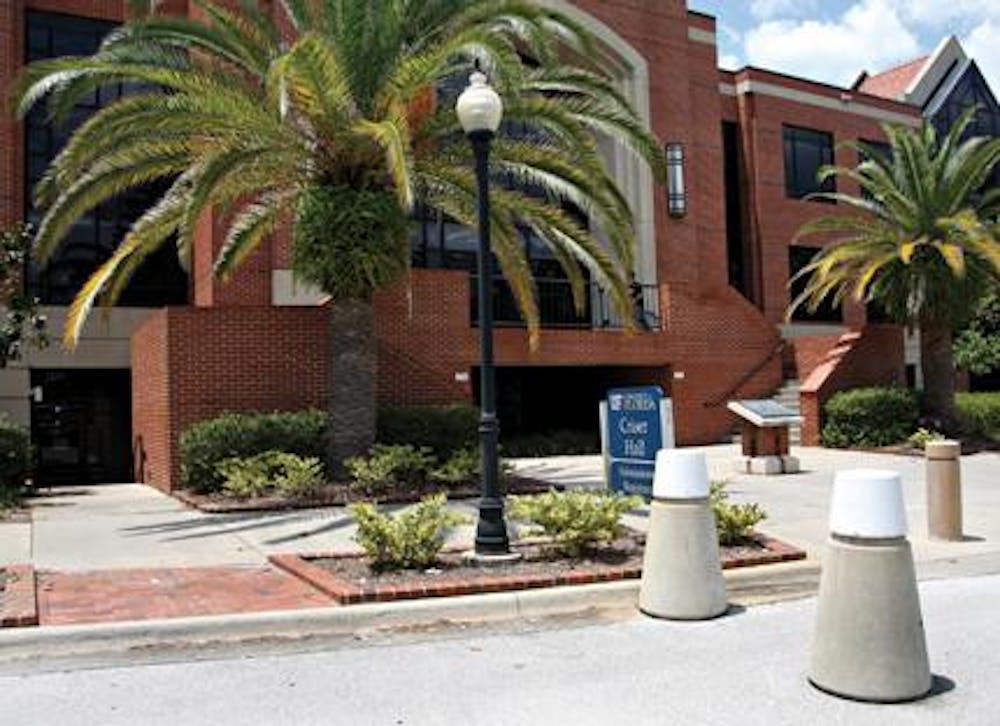As you study, eat and exercise in campus buildings this fall, take a minute to consider the people whose names mark their entrances. Many of the men and women who have campus buildings named for them played a vital role in making UF the university it is today.
The J. Wayne Reitz Union
The Reitz Union was built in 1967 and is actually UF's second student union, said Carl Van Ness, UF historian. Dauer Hall, built in 1932, was the first, but after more than thirty years, the student body outgrew the former union, he said.
The current union is named for UF's fifth president, who served from 1955 to 1967.
J. Wayne Reitz, of Kansas, was the first non-southerner to lead the school, Van Ness said. His presidency was notable for the racial integration of UF, he said.
In 1958, the first African American student enrolled in the Levin College of Law, thus making UF the first state school in Florida to integrate. Because of Reitz's good relationship with the student body, the integration was smoother than in other Southern schools, Van Ness said.
His tenure was also marked by the expansion of campus, which grew by more than 300 buildings with a price tag of $50 million, according to the UF Web site.
"He was a successful and popular president," Van Ness said.
The Stephen C. O'Connell Center
The O'Connell Center, built in 1980, was the first large-scale, multi-purpose facility on campus, Van Ness said. Prior to its construction, basketball games and events that drew large audiences were held in the Florida Gym.
Stephen C. O'Connell was the sixth president of the university and the first alumnus to hold the office, Van Ness said.
As a student, he was captain of the UF boxing team, Florida Blue Key president and Student Body president.
His university presidency, which lasted from 1967 to 1973, was marked by the turmoil of resistance to the Vietnam War in a "time of the counter-culture," Van Ness said.
O'Connell's office was the site of numerous sit-downs, including one by the Black Student Union, whose members felt that little was being done to recruit black students, according to the UF Web site.
Sixty-six students were arrested, and when O'Connell didn't grant them amnesty, about a third of the black population left the university.
The Robert Marston Science Library
Many know the Robert Marston Science Library, built in 1987, by its architectural sculpture "Alachua," also referred to by its student-given name, "The French Fries."
Robert Marston was the seventh president of the university and was recruited because of his reputation for implementing affirmative action, a point of contention at UF, Van Ness said.
"I think he was very empathetic about taking integration seriously and recruiting black professors," he said.
Marston's presidency, from 1974 to 1984, saw some of the worst economic times up until that point, he said.
However, Marston was able to set the school on the right track to admission into the American Association of Universities by focusing on the recruitment of top faculty members and adding many academic departments.
"I think the university that we know today largely began with Marston," Van Ness said.






